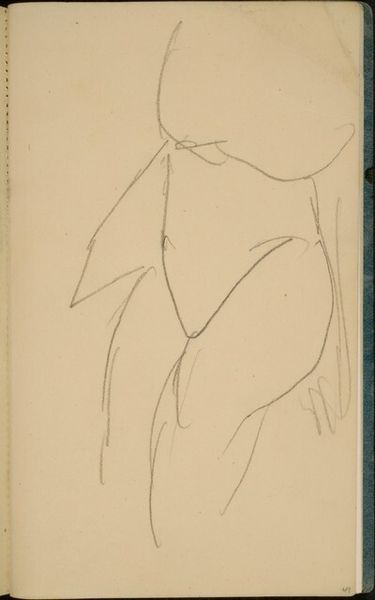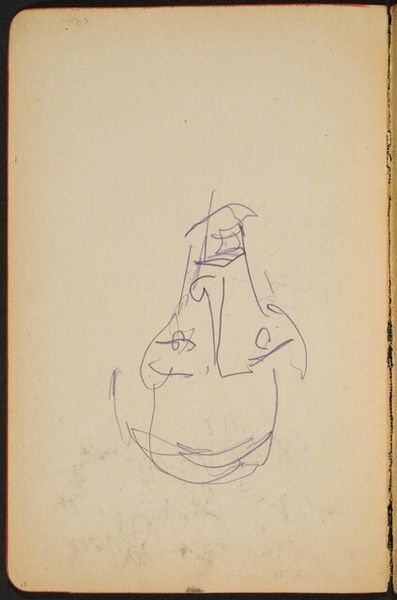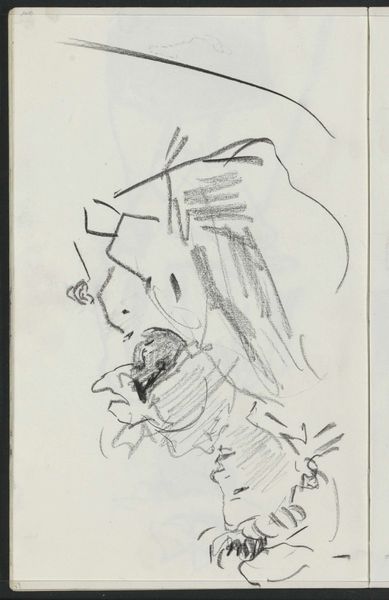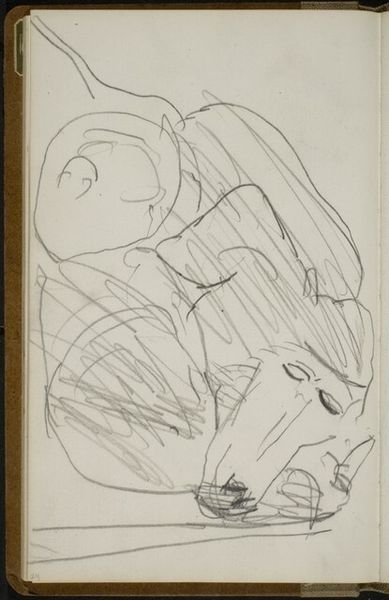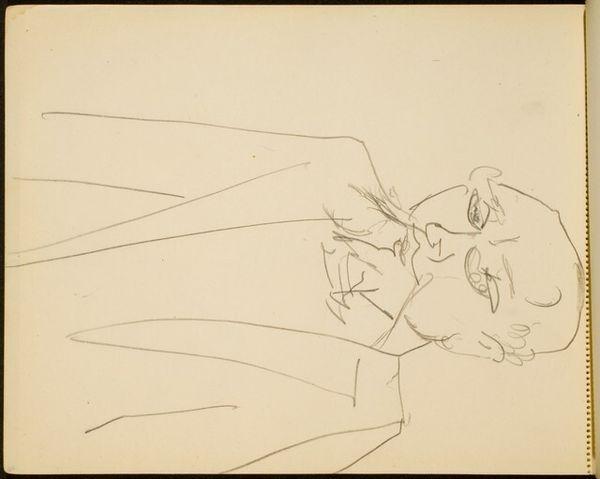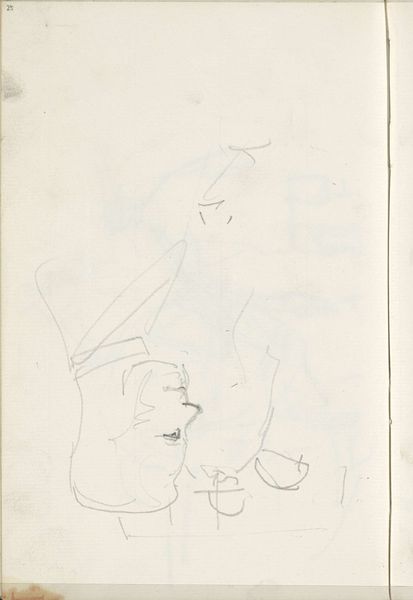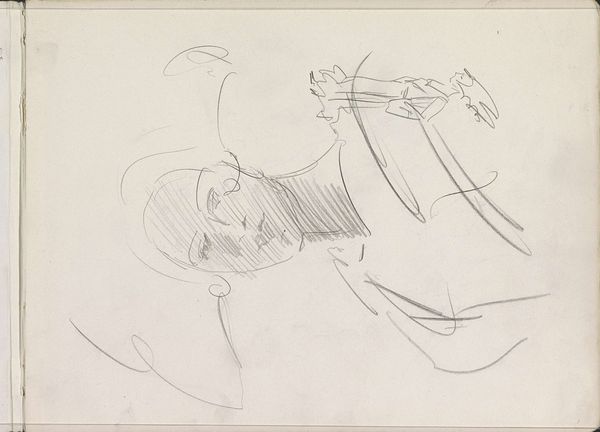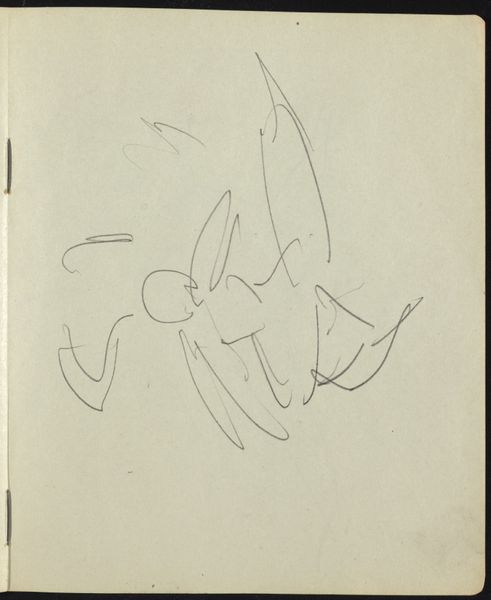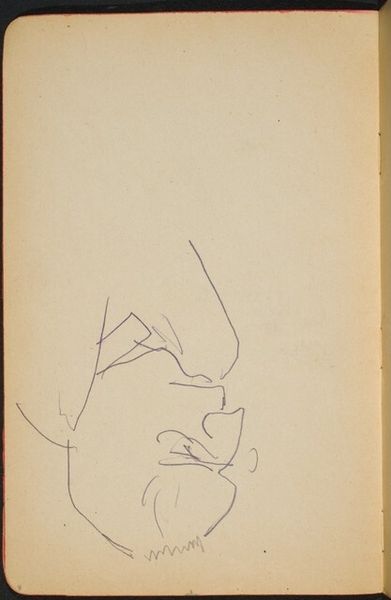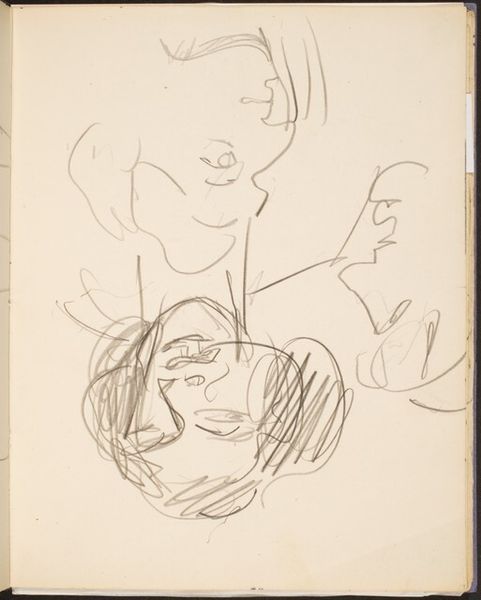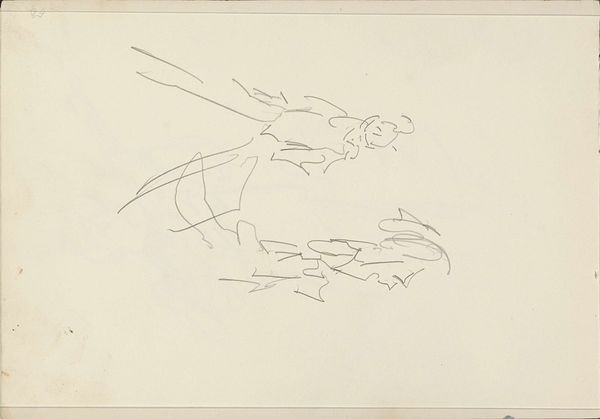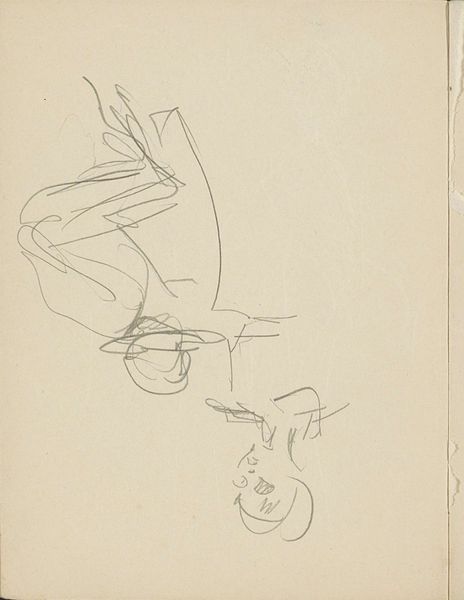![Kamel (Camel) [p. 3] by Max Beckmann](/_next/image?url=https%3A%2F%2Fd2w8kbdekdi1gv.cloudfront.net%2FeyJidWNrZXQiOiAiYXJ0ZXJhLWltYWdlcy1idWNrZXQiLCAia2V5IjogImFydHdvcmtzL2U2MjFjNzg1LTUwYzItNGU3ZC1iYmM2LTUxMjRlYTE4ZmFhNS9lNjIxYzc4NS01MGMyLTRlN2QtYmJjNi01MTI0ZWExOGZhYTVfZnVsbC5qcGciLCAiZWRpdHMiOiB7InJlc2l6ZSI6IHsid2lkdGgiOiAxOTIwLCAiaGVpZ2h0IjogMTkyMCwgImZpdCI6ICJpbnNpZGUifX19&w=1080&q=75)
drawing, pencil
#
portrait
#
drawing
#
ink drawing
#
figuration
#
pencil
#
expressionism
Dimensions: page size: 20.5 x 16.3 cm (8 1/16 x 6 7/16 in.)
Copyright: National Gallery of Art: CC0 1.0
Curator: Looking at this sketchbook page by Max Beckmann, entitled "Kamel (Camel) [p. 3]", it's hard to nail down a specific date, but its expressive, raw style connects it to the Expressionist movement. It is created with pencil and ink drawing. What strikes you most about it? Editor: Immediately, I notice the economy of line. Beckmann achieves the form with incredible speed and certainty, it feels immediate and direct; the white space around the subjects accentuates the starkness of their forms. Curator: The camel, traditionally a symbol of endurance and resilience, appears almost deconstructed here, almost as if it's being reformed or struggling. There's a sense of melancholy, reflecting perhaps the post-World War I anxieties of the time, a period in which Beckmann suffered a nervous breakdown. Editor: That’s interesting. I agree, though the disjointed presentation suggests he’s more concerned with depicting an impression than communicating symbolic values. Look how he treats the face -almost a mask – with the minimal delineation of eyes and the rapid hatching which models the muzzle. Curator: It's true that the mask-like face does remove a sense of animal realism; however, in folklore, camels also symbolize journeys and transformations, elements very fitting for Beckmann’s own journey during that turbulent time and also very in sync with Expressionism that pursued strong emotions above likeness and narrative. Editor: Yes, the transformation occurs directly within the drawing, but notice how it all hangs together as a balanced and intriguing formal whole; how line dictates meaning and structure, all underpinned by feeling. Curator: Beckmann's visual vocabulary creates an intriguing dialogue. It offers multiple perspectives, allowing viewers to find meaning relevant to their individual interpretations. It really challenges traditional notions about symbolic animalistic forms. Editor: Absolutely. We’ve taken two very different roads here that led to related outcomes that Beckmann, I feel, would be very happy with.
Comments
No comments
Be the first to comment and join the conversation on the ultimate creative platform.


